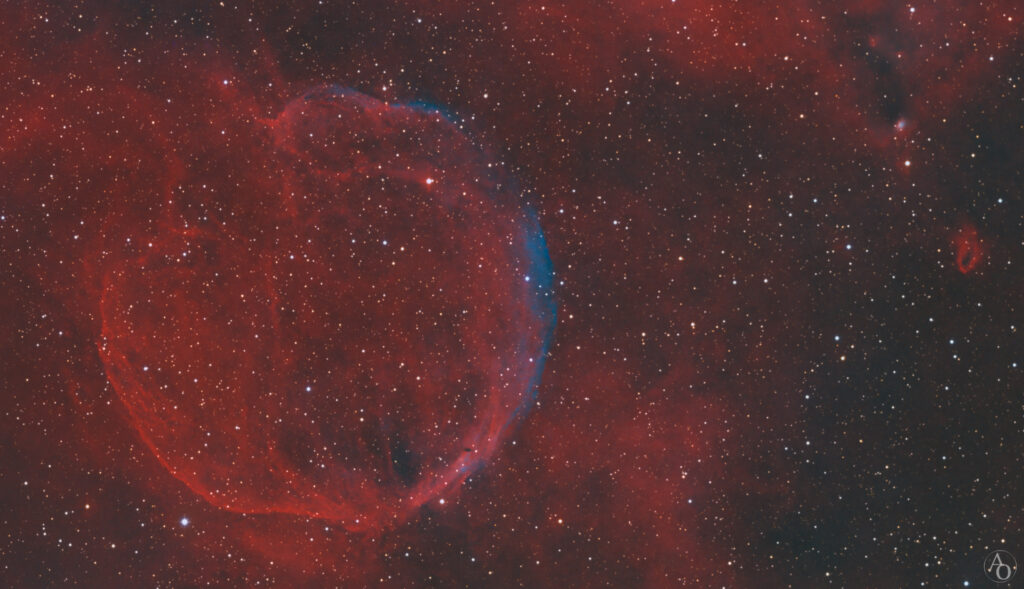CTB 1 is a supernova remnant located in the Cassiopeia constellation. It is thought to be the remnants of a massive star that underwent a supernova explosion, expelling its outer layers into the interstellar medium and leaving behind a compact object such as a neutron star or a black hole.
Supernova remnants are important because they help us to understand the evolution of stars and the processes involved in supernovae.
They also release large amounts of matter and energy into the interstellar medium, which can have a significant impact on their surroundings.

CTB 1 was discovered in the late 1970s and has been the subject of numerous studies since then. These studies have helped to improve our understanding of the structure, dynamics, and evolution of supernova remnants, as well as the properties of the supernova explosions themselves.
It is believed that CTB 1 is relatively young, with an estimated age of only a few thousand years. This makes it an important object for studying the early stages of the evolution of supernova remnants, and for understanding the processes involved in their formation and evolution.

CTB 1 is an oxygen-rich supernova remnant of mixed morphology, that is, in the radio band it is similar to a hollow shell while in X-rays its structure is compact and centralized. Thus, it shows a complete envelope in both the visible spectrum and the radio band. The radio emission is brightest along the western edge, with a prominent gap existing along the northern and northeastern sectors. The uniform envelope—in both wavelength ranges—indicates that the shock wave extends in a relatively homogeneous interstellar medium.
Infrared emission has also been detected at 60 μm and 100 μm from CTB 1; an arc of emission at these wavelengths is coincident with the shell observed at radio frequencies.
The X-ray emission from this supernova remnant, which has a thermal origin, comes from inside the shell observed in the visible and radio spectrum. Notably, the the distribution of ejecta has been asymmetric. CTB 1 is a supernova remnant rich in oxygen and neon, which is surprising for an evolved remnant; The determined abundances are consistent with the explosion of a stellar progenitor with a mass of 13 – 15 solar masses or even greater.
The estimated age of CTB 1 is 10,000 years, although the uncertainty of this value can reach 20%. Other studies give it a greater age, around 16,700 years. On the other hand, there is no consensus regarding the distance at which this supernova remnant is located. Various authors place it at a distance between 20006 and 3100 parsecs, while for others it is 4300 ± 200 parsecs. If this last value is correct, CTB 1 would be located in the Perseus arm and not in the Local arm. CTB 1 has a radius of approximately 15 parsecs.
Technical data of the acquisition:
Baader Blue (CMOS-Optimized) 36 mm: 20×300,″(1h 40′)
Baader Green (CMOS-Optimized) 36 mm: 20×300,″(1h 40′)
Baader H-alpha 6.5nm (CMOS-Optimized) 36 mm: 140×900,″(35h)
Baader O-III 6.5nm (CMOS-Optimized) 36 mm: 60×900,″(15h)
Baader Red (CMOS-Optimized) 36 mm: 20×300,″(1h 40′)
Time integration:
55h
